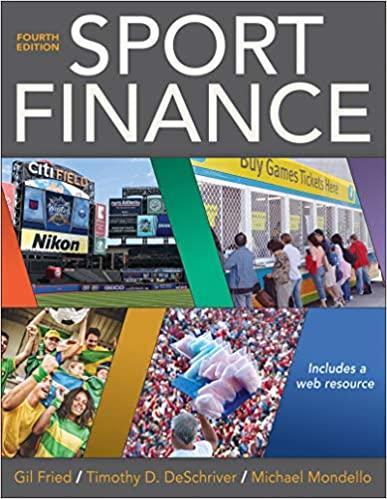Question
Question 1: A U.S. mutual fund has invested in a portfolio of British stocks. However, it does not wish to be exposed to exchange rate
Question 1: A U.S. mutual fund has invested in a portfolio of British stocks. However, it does not wish to be exposed to exchange rate risk.
a. Is the fund exposed to the risk that the $/ rate will rise or fall?
b. To hedge, should it buy or sell British pounds forward? Assume the fund company uses the original investment amount denominated in the British pound as the notional principal for the forward contract.
c. Suppose that the fund invests $16 million in British stocks. The spot exchange rate is $1.68/. The forward rate for delivery 6 months hence is $1.673/. Six months later, the stocks are sold for 9 million, and the spot exchange rate is $1.70/. What final profit or loss would the fund have realized, in terms of dollars, had it originally hedged its initial investment in British stocks? What was its dollar-based annualized rate of return? What would have been its dollar-denominated profit and rate of return, had it not hedged?
Question 2: A Japanese bank expects to lend 10 million to a Spanish firm. If negotiations are successful, the loan will be made one month from today. The terms of the loan have already been established: the Spanish firm is to pay a fixed rate of 5%; the term of the loan will be one year; interest and principal, in euros, will be repaid to the bank one year after the loan is made. The Japanese bank is interested in maximizing the yen-denominated wealth of its shareholders.
a. Clearly discuss the nature of the interest rate risk the Japanese bank faces.
b. Clearly state how the Japanese bank can use forward rate agreements to manage the interest rate risk it faces. Explain how the FRA will reduce the interest rate risk faced by the bank. Be as precise and thorough as you can, given the information provided.
c. Should the bank desire that the contract rate on the FRA be above or below 5%? Why?
For the next two questions, assume the bank enters an FRA to borrow in yen at a fixed rate:
d. Clearly discuss the nature of the foreign exchange rate risks the bank will face after the loan is actually made.
e. Given your response in part d, clearly state how the bank can use forward exchange contracts to manage the exchange rate risk it will face after the loan is actually made. Again, be as precise and thorough as you can, given the information provided. Explain how the forward exchange contract will reduce the exchange rate risk faced by the bank?
Step by Step Solution
There are 3 Steps involved in it
Step: 1

Get Instant Access to Expert-Tailored Solutions
See step-by-step solutions with expert insights and AI powered tools for academic success
Step: 2

Step: 3

Ace Your Homework with AI
Get the answers you need in no time with our AI-driven, step-by-step assistance
Get Started


